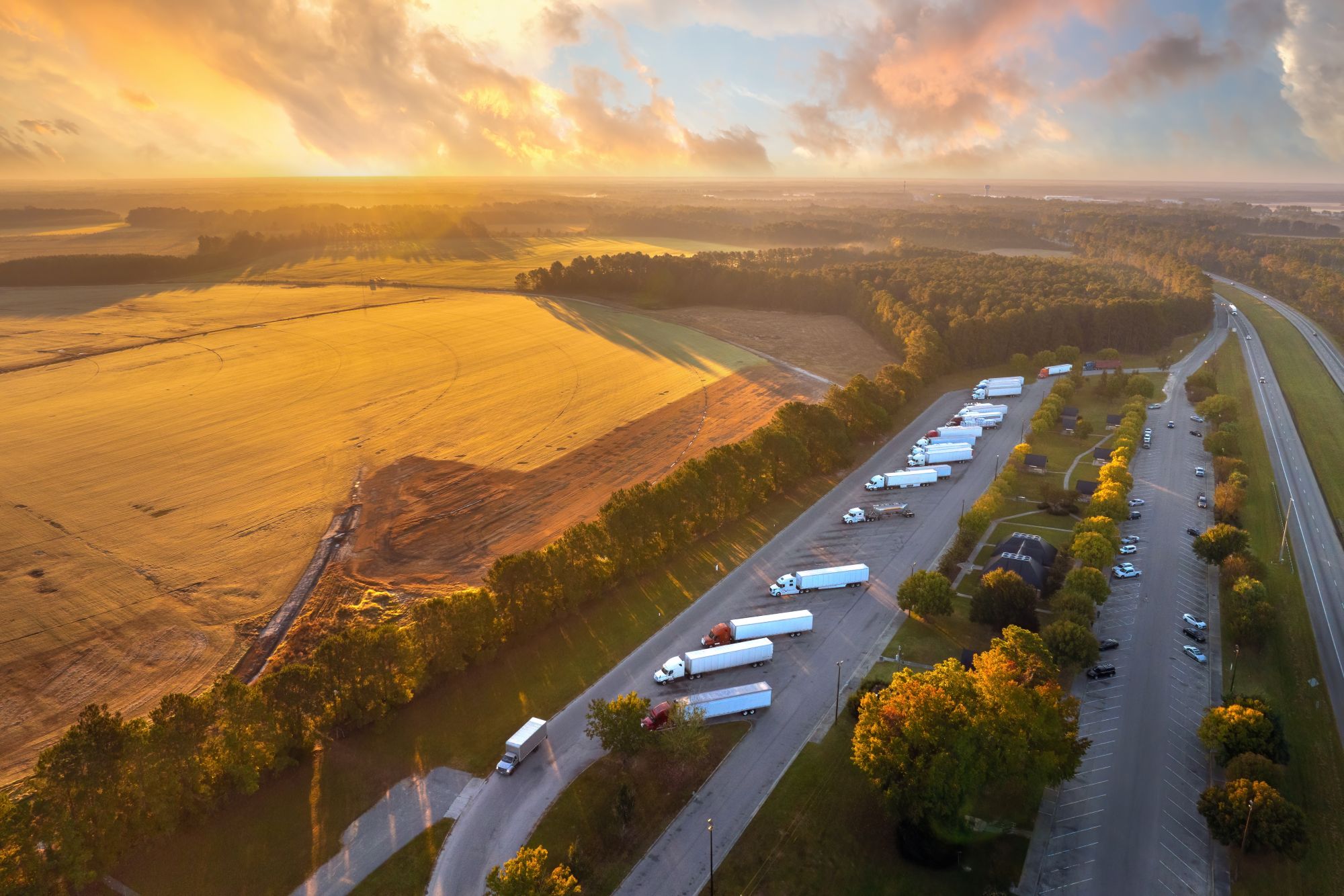
Miranda Blake
Pratiques de conduite sûres : Lignes directrices essentielles à l'intention des conducteurs de poids lourds
Créée: 15/01/2025
•
Mise à jour : 15/01/2025
En tant que conducteur de camion, il est essentiel que vous soyez toujours en sécurité derrière le volant. Mais avec des conditions météorologiques extrêmes et de longs itinéraires à travers l'Europe, comment pouvez-vous vous assurer d'avoir un impact positif ?
Dans cet article, nous présentons des lignes directrices essentielles pour que vous puissiez donner la priorité à votre sécurité et à celle des autres.
Planification et préparation
Tout d'abord, vous devez vous assurer que tout est en place avant de partir.
Organisation du voyage
Tracez soigneusement votre itinéraire à l'avance, en tenant compte de facteurs tels que les conditions météorologiques, la construction des routes et les dangers potentiels. Il est conseillé d'utiliser des technologies telles que le GPS et les applications météorologiques pour rester informé sur votre trajet. Prévoyez également des arrêts pour vous reposer, vous ravitailler et manger. De cette manière, vous vous assurez de maintenir un programme cohérent sans compromettre la sécurité.
Inspections des véhicules
Avant de prendre la route, procédez à une inspection complète de votre camion. Vérifiez les points suivants :
● Vérification du gonflage et de l'usure des pneus
● Des freins pour des performances optimales
● Voyants et signaux de fonctionnalité
● Niveaux des fluides (huile, liquide de refroidissement, liquide de frein, etc.)
● Réglage correct des rétroviseurs
● Arrimage de la cargaison
En évaluant régulièrement ces éléments, vous pouvez identifier les problèmes potentiels avant qu'ils ne se transforment en problèmes majeurs.
Pratiques de conduite sûres sur la route
Leur mise en œuvre est tout aussi cruciale une fois que vous avez démarré le moteur.
Gestion de la fatigue
Il s'agit d'un facteur de risque important pour les grands routiers comme vous. Pour y remédier, nous vous recommandons :
● Respecter les règles relatives aux [heures de conduite] (https://www.gov.uk/drivers-hours/eu-rules)
● Faire des pauses régulières - même si vous ne vous sentez pas fatigué.
● Reconnaître les signes de fatigue et se ranger pour se reposer si nécessaire.
● Maintenir un horaire de sommeil cohérent dans la mesure du possible.
Conduite défensive
Il est également judicieux d'adopter une conduite défensive afin d'anticiper et d'éviter les dangers potentiels. Voici quelques idées :
● Assurer une distance de suivi sûre
● Rester conscient de ses angles morts
● En évitant les changements de voie fréquents et en signalant bien à l'avance.
● Adapter sa vitesse en fonction de l'état de la route et des conditions météorologiques.
● Être préparé aux actions des autres conducteurs.
Gestion de la vitesse
En ce qui concerne le maintien d'une vitesse sûre et constante, vous devriez le faire :
● Respectez toujours les restrictions, en particulier dans les zones où la vitesse des camions est réduite.
● Réduisez votre vitesse dans les virages, dans les zones de travaux et lorsque les conditions météorologiques sont défavorables.
● Utilisez les freins auxiliaires dans les fortes descentes pour éviter la surchauffe.
Entretien et sécurité des véhicules
Autre point important pour la sécurité du transport routier longue distance, vous devez veiller à l'entretien et à la protection de votre camion.
Entretien régulier
Vous devez suivre un calendrier strict pour maintenir votre véhicule dans un état optimal. Par exemple, par :
● Effectuer des vidanges et des contrôles de fluides fréquents.
● Inspection et entretien du système de freinage
● Contrôle de la pression et de l'état des pneus
● Maintenir le système électrique en bon état de fonctionnement.
● traiter rapidement tout problème afin d'éviter les pannes sur la route.
Sûreté du fret
De même, il est essentiel d'assurer la sécurité de votre cargaison. Pour ce faire, vous pouvez
● Utilisation d'attaches et de dispositifs d'arrimage appropriés.
● Répartir la charge de manière uniforme
● Revérifier l'arrimage de la cargaison lors des arrêts, en particulier après un freinage brusque ou un virage serré.
Sécurité des camions
Avec la [protection de votre véhicule] (https://snapacc.com/newsroom/tips-for-keeping-your-vehicle-secure-protecting-your-truck-from-theft/) en plus de votre chargement, il vous est recommandé :
● Garez-vous dans des zones bien éclairées et hautement sécurisées lorsque vous vous arrêtez pour vous reposer.
● Employer des dispositifs antivol et des mécanismes de verrouillage.
● Soyez vigilant et signalez toute activité suspecte.
Connaissance des conditions météorologiques et de l'état des routes
En tant que camionneur longue distance, vous devrez également vous préparer à diverses conditions liées au climat et aux routes. Prenons un exemple :
● Se tenir informé des prévisions le long de votre itinéraire.
● Adapter sa conduite ou retarder son voyage dans les éléments les plus extrêmes.
● Emporter l'équipement nécessaire (chaînes, kit d'urgence, etc.) en fonction des différents temps.
● Procéder avec une prudence accrue dans les zones peu familières ou sujettes à des dangers spécifiques.
Santé et bien-être
Le maintien d'une [bonne santé] (https://snapacc.com/newsroom/how-to-be-a-healthy-truck-driver/) est tout aussi crucial pour conduire en toute sécurité. Veillez donc à :
● Faire des bilans de santé réguliers et obtenir toutes les certifications médicales nécessaires.
● Avoir une alimentation équilibrée et s'hydrater.
● Faire de l'exercice lorsque c'est possible - même s'il s'agit simplement de s'étirer pendant les pauses.
● Gérer le stress par des techniques de relaxation ou des passe-temps pendant les temps morts.
Conduire en toute sécurité avec SNAP
Notre [application intruck] (https://intruckapp.com/download/) est un autre moyen de renforcer la sécurité. Elle permet aux chauffeurs routiers comme vous de payer divers services tels que le stationnement, le lavage, le carburant, etc. En éliminant les transactions en espèces, elle limite les distractions.
De plus, de nombreux sites proposent des mesures de sécurité renforcées, ce qui vous permet d'être certain que votre véhicule est en sécurité pendant les pauses nécessaires. Et comme notre application permet aux utilisateurs de réserver des places de parking à l'avance, vous aurez l'esprit tranquille : il y aura un endroit sûr où vous pourrez vous reposer après de longues heures sur la route.
Rappelez-vous : les pratiques de conduite sûre ne sont pas de simples lignes directrices ; ce sont des principes essentiels que tout camionneur longue distance devrait intégrer dans son éthique professionnelle. En donnant la priorité à la sécurité par une planification minutieuse, une conduite vigilante, un entretien adéquat et l'utilisation de technologies telles qu'intruck, vous pouvez réduire de manière significative les risques associés à votre profession exigeante.
Pour en savoir plus, contactez notre équipe au +44 (0)1603 777242.



